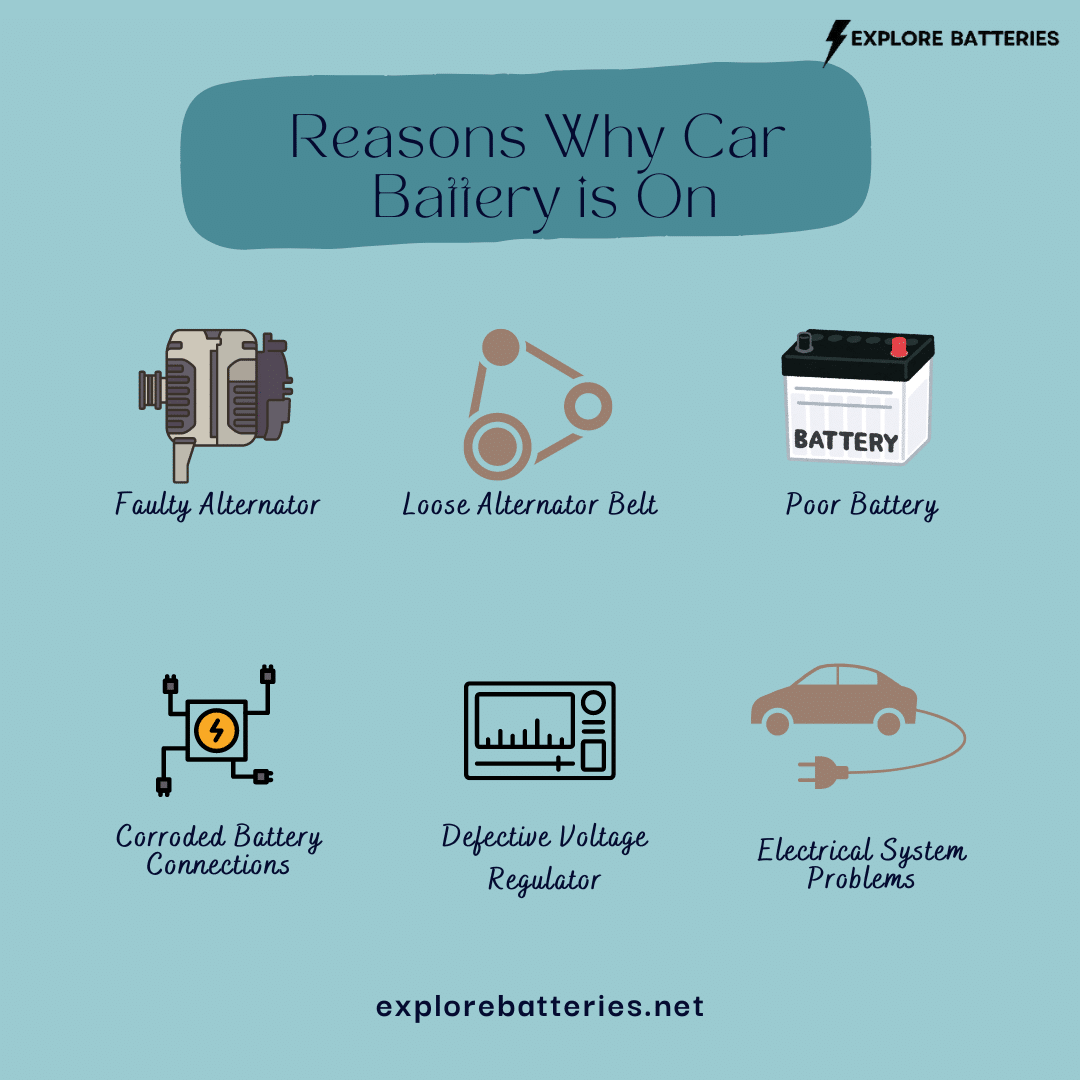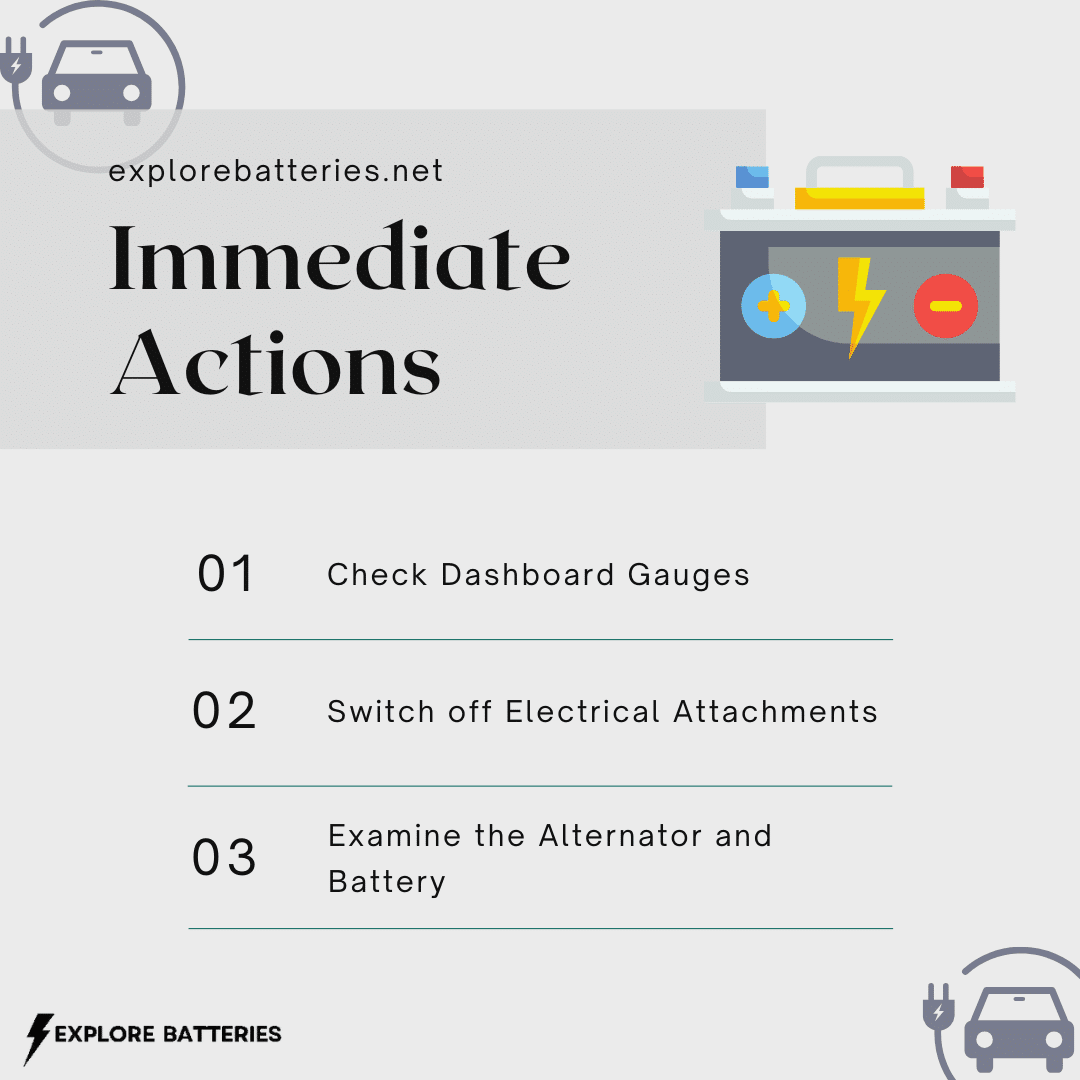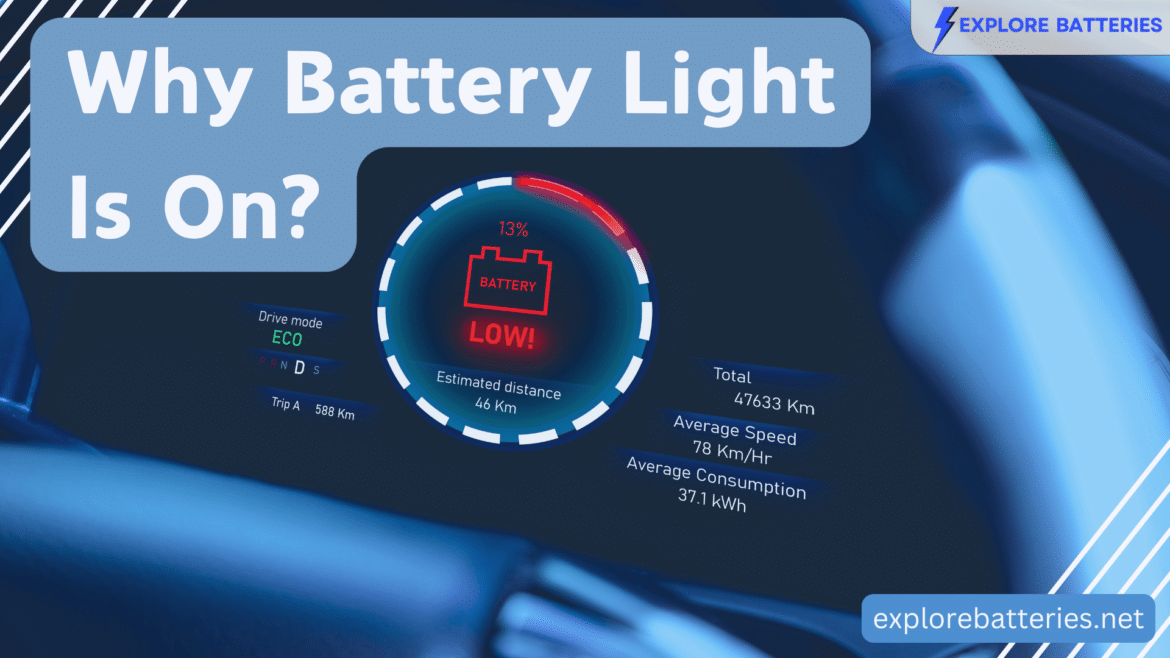Table of Contents
Let’s face it: it’s not worth it if you are planning your trips and packing your gear yet not checking your vehicle’s condition before starting your journey. Imagine your car suddenly stalling in the middle of the road and now having nowhere to go. Folks, no matter if you have installed the best battery in your car or if you have unforeseen incidents, don’t knock at the door before they happen. Although sometimes your car battery needs to be replaced, at other times, it’s just the charging issue if the battery light turns on, but the car runs fine. This indicates that, for whatever reason, your car battery is not gaining enough charging, and as soon as the light turns on, it will drain the charge quickly, causing the battery to die. So, in this guide, we will explain the causes of and potential solutions to this phenomenon.
Battery Light on the Car Explained

The diagnostic system in your car includes the dashboard battery light. It flashes when there is a problem with the charging system (i.e., the alternator or battery). The alternator recharges the battery and powers the electrical systems when the engine is running, whereas the battery powers the vehicle’s electrical components. An improper battery charging is indicated when the light illuminates. So, if your battery light has turned on suddenly, yet the car is running fine, it is still a problem.
You can check out the role of battery lights in cars in this article.
Typical Reasons

Let’s talk about the causes of the car battery turning on while driving. Although your car, such as a Toyota, seems to run fine, the battery light on indicates that you should pinpoint the issue and fix it as soon as possible.
1. Faulty Alternator
If you’re wondering why your car’s battery light is on, the alternator could be the problem.
- Cause: The alternator charges the battery while the engine runs. If it’s not working, the light comes on, and the battery won’t charge properly.
- Solution: Get the alternator checked and replaced if needed. A mechanic can test its output to make sure it’s working right.
2. Damaged or Loose Alternator Belt
Folks, check the belt to see if the battery light turns on and off, but the alternator seems fine.
- Cause: The alternator is powered by the alternator (serpentine) belt. A damaged or loose belt can cause the alternator to stop working.
- Solution: Inspect the belt for wear. If it’s broken, replace it. If it’s loose, tighten it.
3. Poor Battery
Wait a minute; your battery might be the problem if the battery light comes on in the car. So, it’s wise to select a premium-quality battery instead of regretting it later.
- Cause: A weak or old battery might not hold a charge, even though alternators often cause this issue.
- Solution: Test the battery with a multimeter. If the voltage is too low, replace the battery.
4. Loose or Corroded Battery Connections
Folks, if you are driving and suddenly, your battery light in the car comes on, then connections might be the main culprit.
- Cause: Loose or corroded battery terminals can cause the light to turn on.
- Solution: Clean the terminals with a mix of baking soda and water. Make sure the connections are tight.
5. Defective Voltage Regulator
Instead of worrying about why the battery light is on in my car, check out the voltage regulators, as it might be the core issue.
- Cause: It controls the voltage from the alternator to the battery. If it’s faulty, it could overcharge or undercharge the battery.
- Solution: A mechanic can check the regulator. If it’s bad, it will need to be replaced.
6. Electrical System Problems
What if a malfunctioning electrical system is causing the battery light to come on while you are driving? In that case, you have to figure out the core issue in the system too.
- Cause: Issues with fuses, battery cables, or relays can also trigger the light.
- Solution: Have a mechanic do a full electrical system check to find and fix the issue.
Take Immediate Action for on Battery Light in Car

Once you have pinpointed the core issue for the car battery light to turn on, it’s time to look for solutions and immediate actions.
1. Inspect the Dashboard Gauges: Look for additional warning lights or odd gauge readings, like a higher-than-usual temperature gauge, which could point to a more serious problem.
2. Switch Off Unnecessary Electrical Attachments: To lessen the strain on the charging system, turn off unnecessary equipment such as the lights, air conditioner, and radio.
3. Examine the Alternator and Battery: If you feel comfortable doing so, look for any obvious problems with the alternator belt and the battery terminals. Make sure all of the connections are tight and clean.
Preventative Actions
You can avoid all this fuss of battery light on the car if you go for regular maintenance of your vehicle.
1. Regular Maintenance: Inspect and maintain the battery, alternator, and related parts of your car regularly. This entails making sure the alternator belt is in excellent shape and inspecting the battery terminals for corrosion.
2. Periodic Testing: Get your alternator and battery checked regularly, particularly before lengthy travels. Several parts stores provide test services for free.
3. Observe the Battery’s Age: Automotive batteries have an average lifespan of three to five years. As a preventative step, think about replacing your battery if it is getting close to this age.
When to Get Expert Assistance?
It is important to seek professional assistance if the dashboard battery light stays on after taking the basic procedures. A mechanic can carry out an expert diagnostic to determine and address the root cause. Check to see your owner’s manual for detailed instructions relevant to your car model. Carrying on while the battery light is on could lead to the whole electrical system failing, trapping you.
Conclusion
Summing up, the article covered a discussion on the phenomenon of car batteries turning on while driving. We have mentioned the potential reasons for this to happen so you find it easy to pinpoint the issue and go for fixes immediately. So, follow our article guide and fix your battery’s issue.

